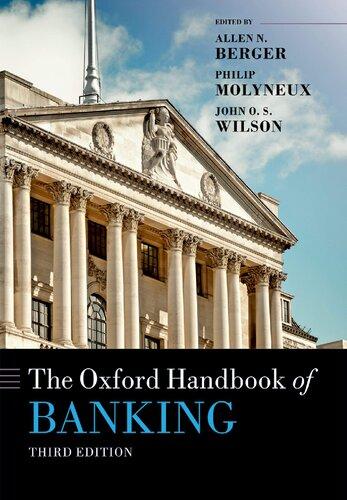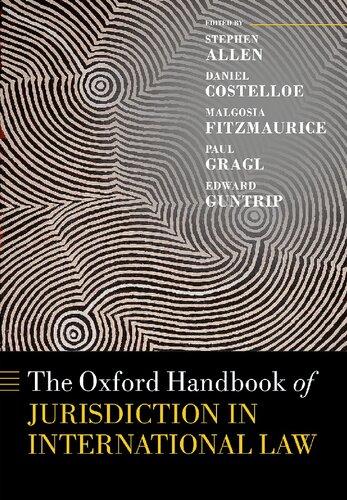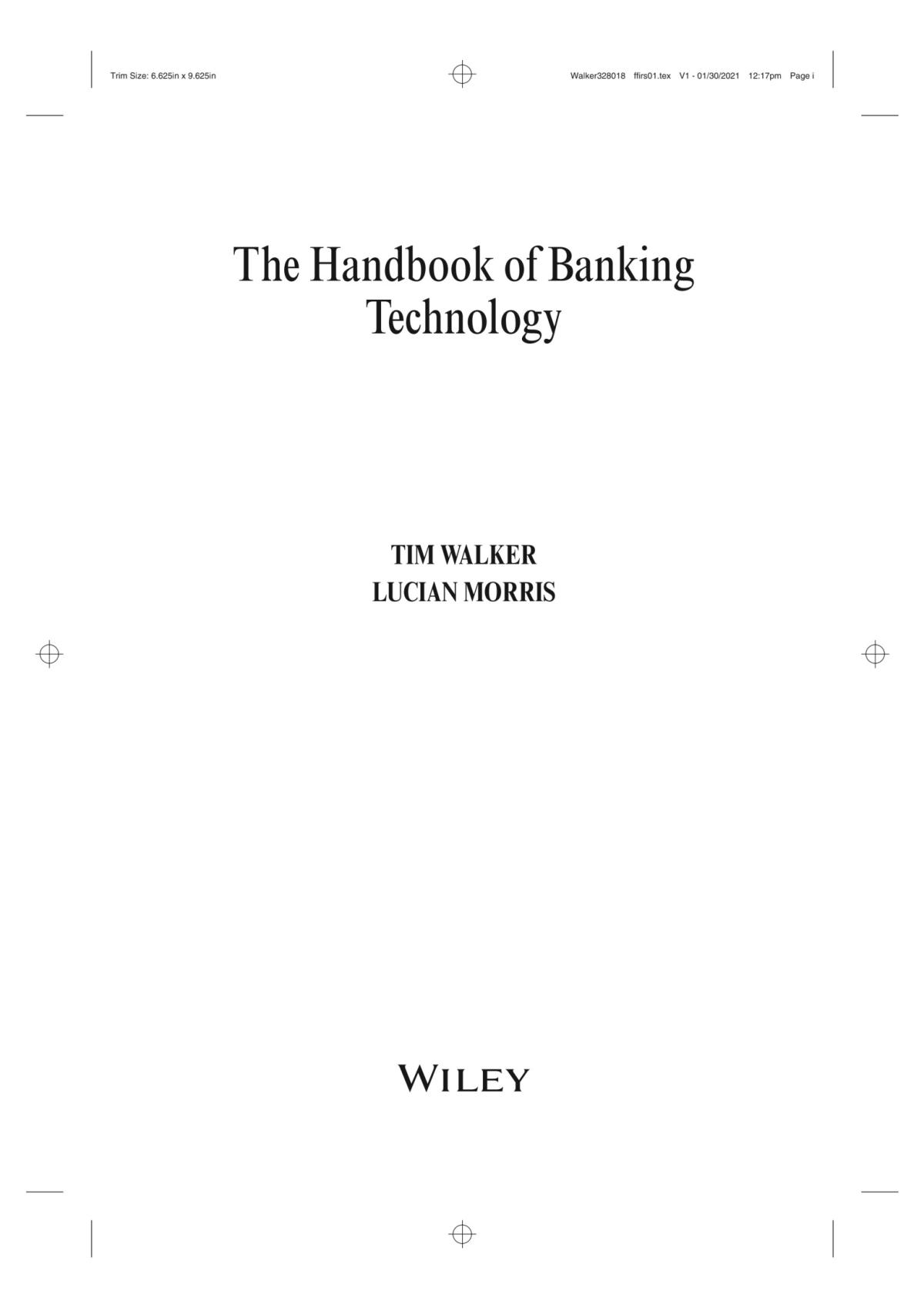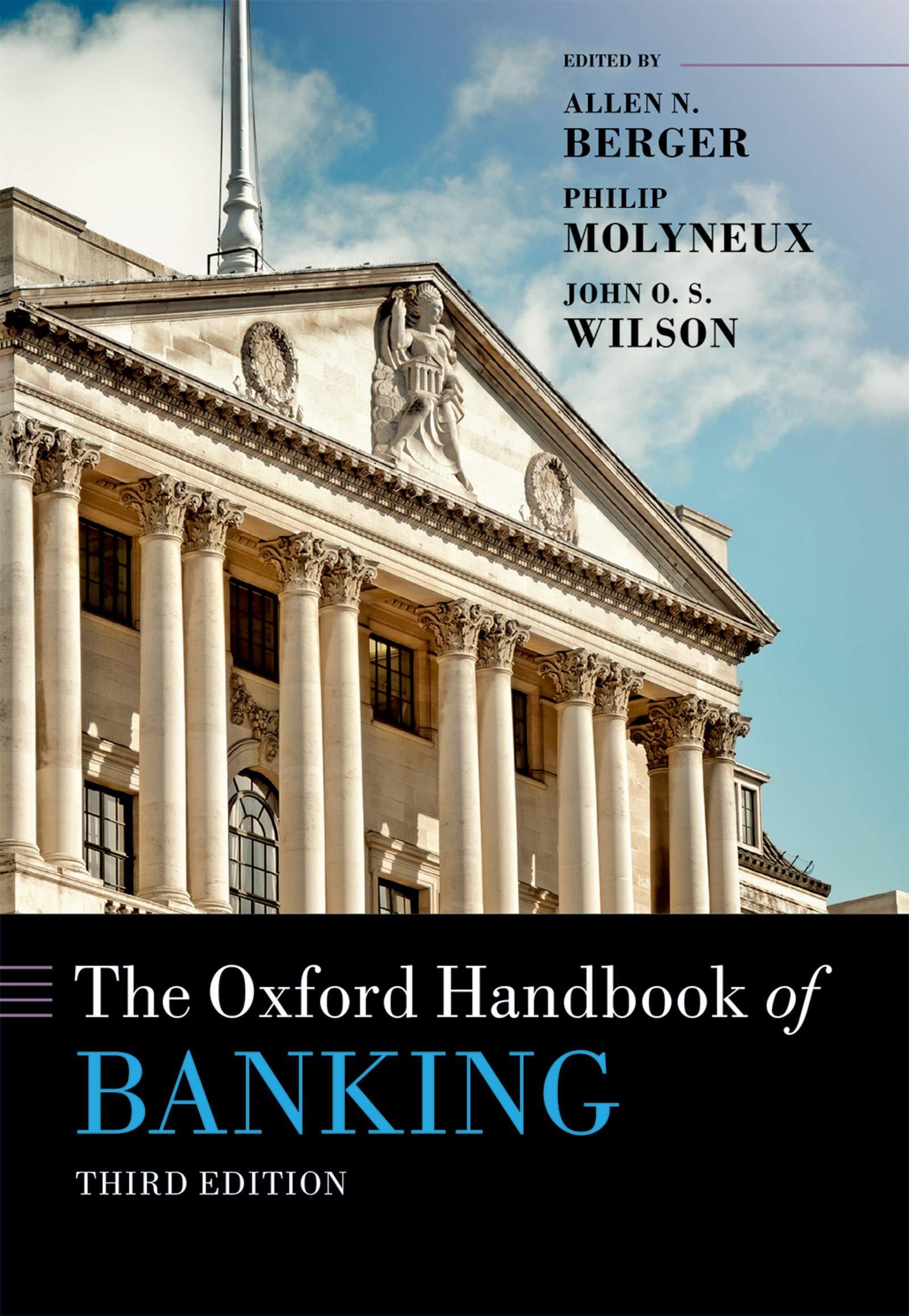Acknowledgements
First, and most important, we wish to thank the contributors to the Handbook. We are delighted to have brought together such an outstanding set of research experts from academic and policy arenas across Europe, North America, South America, Asia, and Australasia. These experts have shown a high level of commitment and perseverance to the project from beginning to end. Without their expertise, dedication, and efficiency in producing scholarly banking chapters this Handbook would never have been possible.
The production of this Handbook has also relied heavily on the exceptional enthusiasm and commitment of Oxford University Press, most notably Adam Swallow, publisher for Economics and Finance, who was crucial in helping us kick-start the project. Oxford University Press delegates and a number of anonymous referees also played an important role in advising on the shape of the Handbook.
We would like to thank and acknowledge Verity Rimmer and also Katie Bishop, whose advice was invaluable and who was always on hand to help and worked closely with us throughout the entire process. The team in New York also played a valuable role, and so we’d like to thank Viviana Lachmund and Laura Heston. Manikandan Chandrasekaran and Jen Hinchliffe also played a crucial role toward the end of the project. We would also like to acknowledge the support of our home institutions: the Moore School of Business at the University of South Carolina; the College of Business Administration at the University of Sharjah; and the Centre for Responsible Banking & Finance at the Management School, University of St Andrews. We would especially like to thank Dorothy Campbell who provided excellent assistance in preparing the final manuscript prior to submission.
During the writing of this Handbook, Fernando José Cardim de Carvalho, Emeritus Professor at UFRJ (Federal University of Rio de Janeiro, Brazil) and Senior Fellow at the Levy Economics Institute, Bard College in New York passed away on the 16th of May, 2018. He was 64 years old. Fernando was one of Brazil’s most revered economists. A leader of the post-Keynesian economists in Brazil, he was an associate editor of the Journal of Post Keynesian Economics. Among his many published works, he authored Mr Keynes and the Post Keynesians (Edward Elgar, 1992), and Liquidity Preference and Monetary Economics (Routledge, 2015). Fernando was an active and leading voice in discussions about money and financial systems and was writing until the time of his passing. Fernando wrote the excellent section on Latin American Development Banks: Some New Developments or an Impasse? in Chapter 37 of this Handbook, Banking in Latin America: Developments and Prospects. As always, Fernando provided valuable
insights, expert analysis, and perfect context, which is indicative of his great intellect and contribution to knowledge.
Finally, we would like to thank our families and friends for their encouragement and patience over the last decade while completing the three editions of the Handbook. Their support is always very much appreciated.
List of Figures xv
List of Tables xix
List of Abbreviations xxiii
List of Contributors xxxi
1. Banking: A Decade on from the Global Financial Crisis 1 Allen N. Berger, Philip Molyneux, and John O. S. Wilson
PART I THE THEORY OF BANKING
2. The Roles of Banks in Financial Systems 39 Franklin Allen, Elena Carletti, and Xian Gu
3. Commercial Banking and Shadow Banking: The Accelerating Integration of Banks and Markets and its Implications for Regulation 62 Arnoud W. A. Boot and Anjan V. Thakor
4. Corporate Complexity and Systemic Risk: A Progress Report 95 Jacopo Carmassi and Richard J. Herring
5. Corporate Governance and Culture in Banking 131 Jens Hagendorff
6. Private Information and Risk Management in Banking 153 Linda Allen and Anthony Saunders
7. Creation and Regulation of Bank Liquidity 181 Christa H. S. Bouwman
PART II A CTIVITIES AND PERFORMANCE
8. The Performance of Financial Institutions: Modeling, Evidence, and some Policy Implications 229 Joseph P. Hughes and Loretta J. Mester
9. Technological Change and Financial Innovation in Banking: Some Implications for FinTech 262
W. Scott Frame, Larry Wall, and Lawrence J. White
10. Payments 285
David Humphrey
11. Community Banking Institutions: Commercial Banks, Savings Banks, Cooperative Banks, and Credit Unions 321
Dasol Kim and Donal McKillop
12. Islamic Banking: A Review of the Empirical Literature and Future Research Directions 359
Narjess Boubakri, Ruiyuan (Ryan) Chen, Omrane Guedhami, and Xinming Li
13. Can We Improve the Impact of Microfinance? A Survey of the Recent Literature and Potential Avenues for Success 404
Robert Lensink and Erwin Bulte
14. Small Business Lending: The Roles of Technology and Regulation from Pre-crisis to Crisis to Recovery 431
Allen N. Berger and Lamont K. Black
15. Residential Mortgages 470
Andreas Lehnert and Alex Martin
16. Securitization 503
Barbara Casu and Anna Sarkisyan
17. Shadow Banking 530
Tobias Adrian, Adam B. Ashcraft, Peter Breuer, and Nicola Cetorelli
PART III REGUL ATORY AND POLICY PERSPECTIVES
18. Modern Central Banking 573
Frederic S. Mishkin
19. Lender of Last Resort: A New Role for the Old Instrument 602
Xavier Freixas and Bruno M. Parigi
Deniz Anginer and Asli Demirgüç-Kunt
Mark E. Van Der Weide and Jeffery Y. Zhang
Mark J. Flannery and Robert R. Bliss
Hans Degryse, Paola Morales-Acevedo, and Steven Ongena
Gregory Elliehausen
PART IV MA CROECONOMIC PERSPECTIVES
Olivier de Bandt and Philipp Hartmann
Gerard Caprio Jr. and Patrick Honohan 28.
Charles W. Calomiris
Claudia M. Buch and Gayle L. DeLong 30. Banking and Real Economic Activity: Foregone Conclusions and Open Challenges
Nicola Cetorelli and Michael Blank
PART V B ANKING SYSTEMS AROUND THE WORLD
31. Banking in the United States 977
Robert DeYoung
32. Banking in Europe: Integration, Reform, and the Road to a Banking Union 1000
John Goddard, Philip Molyneux, and John O.S. Wilson
33. Banking in Japan: A Post-global Financial Crisis Perspective 1033
Hirofumi Uchida and Gregory F. Udell
34. Banking in Africa 1076
Thorsten Beck, Robert Cull, and Patricio Valenzuela
35. Banking in China 1113
Leora Klapper, María Soledad Martínez Pería, and Bilal Zia
36. Banking in the Transition Countries of Central, Southern, and Eastern Europe and the Former Soviet Union 1132
Zuzana Fungáčová, Iftekhar Hasan, Laura Solanko, and Paul Wachtel
37. Banking in Latin America: Developments and Prospects 1152
Fernando J. Cardim de Carvalho, Luiz Fernando de Paula, and Jonathan Williams
38. Banking in Australia and New Zealand—Geographic Proximity, Market Concentration, and Banking Integration 1190
Fariborz Moshirian and Eliza Wu Index 1215
29.2 Percentage of Bank Acquisitions that Are Cross-Border (by Year)
29.4 Percentage of Cross-Border Bank Acquisitions (by Region and Year) 1985–2017
31.1 Number of Commercial Banks and Commercial Bank Branch Offices in the US between 1940 and 2017
Aggregate Return-on-Equity and Equity-to-Assets Ratios for the US Commercial Banking Industry, 1934 to 2017
31.3 Merged Banks, Newly Chartered Banks, and Failed Banks, Expressed as a Percentage of the US Commercial Bank Population, each Year from 1970 to 2017
31.4
31.5 The Changing Distribution of US Commercial Banks by Asset Size (in 2009 dollars) between 1980 and 2017
31.6
34.6 Private Credit/GDP (%) in African Countries 2011–15, Actual vs. Predicted Values
34.7 Use of Formal Account and Loan Services across Firm Size Groups in International Comparison, 2013–17
34.8
34.9
34.10
35.1
35.2
35.3
35.4
35.5
35.6
35.7
38.1
4.1 Size and Complexity of G-SIBs, 2018 vs. 2013 (G-SIBs Ranked by Total Assets 2017)
4.2 Geographical Diversification of G-SIBs and Subsidiaries in OFCs, 2018 vs. 2013 (G-SIBs Ranked by Number of Countries in 2018)
4.3 Breakdown by Industry of Subsidiaries of G-SIBs, October 2018 (in bold) and May
4.4 Number of Subsidiaries of US G-SIBs According to the FED/NIC
22.6
22.7
23.A1
2
29.1
31.3
31.4
32.1
32.3
32.4
33.1
33.2
33.3
33.4
34.1
34.2
List of Abbreviations
AAOIFI Accounting and Auditing Organization for Islamic Financial Institutions
ABCP asset-backed commercial paper
ABL asset-based lending
ABS asset-backed securities
ABSPP asset-backed securities purchase program
ACH Automated Clearing House
ADIs Authorised Deposit-taking Institutions
AIG American International Group
A-IRB advanced internal ratings-based approach
AMA advanced measurement approach
AMC asset management company
AMLF Asset-Backed Commercial Paper Money Market Mutual Fund Liquidity Facility
APP asset purchase program
APRA Australian Prudential Regulation Authority
AQR asset quality review
ARM adjustable rate mortgage
ASF available stable funding
ASIC Australian Securities and Investments Commission
ATM automated teller machine
BCBS Basel Committee on Banking Supervision
BCCI Bank Credit and Commerce International
BEEPS Business Environment and Enterprise Performance Survey
BHC bank holding company
BIS Bank for International Settlements
B/M ratio book-to-market ratio
BoJ Bank of Japan
BOJ-NET Japan’s Real Time Gross Settlement Network
BOLR buyer of last resort
BOPEC Summary performance ratings assigned to US bank holding companies over the period 1987 to 2004
BRRD Bank Recovery and Resolution Directive
BRSS Bank Regulation and Supervision Survey
C&I commercial and industrial
CAMELS Capital, Assets, Management, Earnings, Liquidity, and Sensitivity
CAPM capital asset pricing model
CAR cumulative abnormal return
CATFIN early warning systemic risk indicator
CB central bank
CBC commercial bank clearinghouse
CBOT Chicago Board of Trade
CBPP covered bond purchase program
CCAR Comprehensive Capital Analysis and Review
CCB capital conservation buffer
CCyB countercyclical capital buffer
CDCI Community Development Capital Initiative
CDO collateralized debt obligation
CDS credit default swap
CEE Central and Eastern Europe
CFPB Consumer Financial Protection Bureau
CET1 Common Equity Tier 1
CGFS Committee on the Global Financial System
CHAPS UK’s RTGS network
Check 21 Electronic processing/collection of paper checks in the US
CHIPS A US bank-operated large-value payment network
CISS Composite Indicator of Systemic Stress
CLS Bank A Continuous Linked Settlement bank handling foreign exchange transactions
CLTV combined loan-to-value ratio
CMBS commercial mortgage-backed security
CME Chicago Mercantile Exchange
CMO collateralized mortgage obligation
CNAV constant net asset value
CoCos Contingent Convertible Bonds
CoVaR Conditional Value at Risk
CP commercial paper
CPFF Commercial Paper Funding Facility
CPP Capital Purchase Program
CR3 three-bank concentration ratio
CR5 five-bank concentration ratio
CRA credit rating agency
CRD Capital Requirements Directive
CRE commercial real estate
CS credit spread
CSPP corporate sector purchase program
CSR corporate social responsibility
CVA credit valuation adjustment
DEA data envelopment analysis
DFA Dodd–Frank Act
DFAST Dodd–Frank Act Stress Test
DIC Deposit Insurance Company
DIDMCA Depository Institutions Deregulation and Monetary Control Act
DRC Democratic Republic of Congo
DSGE dynamic stochastic general equilibrium
D-SIBs domestically systemically important banks
DSTI debt-service-to-income
DTI debt-to-income ratio
DVP delivery versus payment
DW discount window
EAD exposure at default
EBA European Banking Authority
EBITDA earnings before interest, tax, depreciation, and amortization
EBRD European Bank for Reconstruction and Development
EC European Commission
ECB European Central Bank
ECOFIN EU Council of Finance
EDIS European Deposit Insurance Scheme
EEC European Economic Community
EESA Emergency Economic Stabilization Act
EFSF European Financial Stability Facility
EFTPOS electronic funds transfer at point of sale
EIB European Investment Bank
EIOPA European Insurance and Occupational Pensions Authority
ELA emergency liquidity assistance
EM emerging market
EMU Economic and Monetary Union
ES expected shortfall
eSLR enhanced supplementary leverage ratio
ESRB European Systemic Risk Board
ESRC European Systemic Risk Council
EU European Union
Euro 1 A European bank-operated large-value payment network
EVT extreme-value theory
FAS Financial Access Survey
FASB Financial Accounting Standards Board
FDI foreign direct investment
FDIC Federal Deposit Insurance Corporation
FED US Federal Reserve
Fedwire US’s RTGS network
FHA Federal Housing Administration
FHFA Federal Housing Finance Agency
FHLB Federal Home Loan Bank
FHLMC Federal Home Loan Mortgage Corporation (also Freddie Mac)
FICO Fair Isaac and Company
FILP Fiscal Investment Loan Program
FINDEX Global Financial Inclusion Database
FinTech financial technologies
F-IRB foundation internal ratings-based approach
FNMA Federal National Mortgage Association (also Fannie Mae)
FRB Federal Reserve Bank
FSA Financial Services Agency
FSAP Financial Sector Assessment Programs
FSB Financial Stability Board
FSIs financial system inquiries
FSOC Financial Stability Oversight Council
FSRRA Financial Services Regulatory Relief Act
FSU Former Soviet Union
FX foreign exchange
G20 Group of 20 Heads of State
GAAP Generally Accepted Accounting Principles
GCC Gulf Cooperation Council
GFC Global Financial Crisis or Great Financial Crisis
GDP Gross Domestic Product
GIIPS Greece, Italy, Ireland, Portugal and Spain
Giro European credit transfer network
GLB Gramm–Leach–Bliley Act
GNMA Government National Mortgage Association (also Ginnie Mae)
GSE government-sponsored enterprise
G-SIBs Global Systemically Important Banks
G-SIFIs Global Systemically Important Financial Institutions
HAMP Home Affordable Modification Program
HARP Home Affordable Refinance Program
HHI Herfindahl–Hirschman Index
HMDA Home Mortgage Disclosure Act
HQLA high-quality liquid assets
ICOs initial coin offerings
IDB Islamic Development Bank
IFIs international financial institutions
IFRS International Financial Reporting Standards
IFSB Islamic Financial Services Board
IFSI Islamic Financial Services Industry
IIFM International Islamic Financial Market
IMF International Monetary Fund
InsurTech insurance technologies
IO industrial organization
IRA individual retirement accounts
IRB internal ratings-based
ITT intention-to-treat
JA Bank Japan Agriculture Bank
JBIC Japan Bank for International Cooperation
JFC Japan Finance Corporation
KYC know your customer
KYCC know your customer’s customer
LATE local average treatment effects
LGFV local government financing vehicle
LCBOs large and complex banking organizations
LCR liquidity coverage ratio
LGD loss given default
LIBOR London Interbank Offered Rate
LLP loan loss provisioning
LMI liquidity mismatch index
LOLR lender of last resort
LPFC limited-purpose finance company
LSAP Large-Scale Asset Purchase
LSIs Less Significant Institutions
LTRO Long-Term Refinancing Operation
LTV loan-to-value
LVG leverage
M maturity
M&A mergers and acquisitions
MAC material adverse change
MBS mortgage-backed securities
MENA Middle East and North Africa
MERS Mortgage Electronic Registration System
MES marginal expected shortfall
MFIs microfinance institutions
ML machine learning
MMDA money market deposit account
MMIFF Money Market Investment Fund Facility
MMFs money market funds
MMMFs money market mutual funds
MoF Ministry of Finance
MRO Main Refinancing Operations
MTN medium-term note
NBCI non-bank credit intermediation
NCOF net cash outflows
NEIO new empirical industrial organization
NFC non-financial corporation
NFIB National Federation of Independent Businesses
NIC National Information Center
NIRP negative interest rate policy
NOW negotiable order of withdrawal account
NPF non-performing financing
NPL non-performing loan
NRSRO Nationally Recognized Statistical Rating Organization
NSFR net stable funding ratio
OCC Office of the Comptroller of the Currency
OECD Organisation for Economic Co-operation and Development
OFC off-shore financial center
OLA orderly liquidation authority
OLF orderly liquidation fund
OMO open market operations
OMT outright monetary transactions
OTH originate-to-hold
OTC over-the-counter
OTD originate-to-distribute
OTS Office of Thrift Supervision
P2P Peer-to-peer
PBoC People’s Bank of China
PCA prompt corrective action
PD probability of default
PDCF primary dealer credit facility
PE private equity
PIN Personal Identification Number
PLC public limited company
PPI payment protection insurance
PRA Prudential Regulatory Authority
PSD2 Payments Systems Directive 2
PSEs public sector entities
PVP payment versus payment
QE quantitative easing
RAROC risk-adjusted return on capital
RCTs randomized controlled trials
RegTech regulatory technology
REITs real estate investment trusts
REMICs real estate mortgage investment conduits
Repos repurchase agreements
RFC Reconstruction Finance Corporation
RMB renminbi
RMBS residential mortgage-backed securities
RMP relative market power
ROA return on assets
ROE return on equity
ROSCAS rotating savings and credit associations
RSF required stable funding
RTGS Real-Time Gross Settlement
RWA risk-weighted assets
S&Ls savings and loans
SBA Small Business Administration (US)
SBCS small business credit scoring
SCB stress capital buffer
SBET small business economic trends
SCF Survey of Consumer Finances
SBLF Small Business Lending Fund
SCAP Supervisory Capital Assessment Program
SCP structure–conduct–performance
SCR sectoral capital requirements
SDG sustainable development goals
SEC Security and Exchange Commission
SEE Southeastern Europe
SEPA Single Euro Payments Area
SES systemic expected shortfall
SFT securities financing transaction
SIC Standard Industrial Classification
SIFI systemically important financial institution
SIV structured investment vehicle
SLR supplementary leverage ratio
SMEs small to medium-sized enterprises
SNC Shared National Credit
SND subordinated notes and debentures
SOCBs state-owned commercial banks
SOEs state-owned enterprises
SOP say-on-pay
SPOE single point of entry
SPV special purpose vehicle
SRISK systemic risk
SRF Single Resolution Fund
SRM Single Resolution Mechanism
SSB Sharia Supervisory Board
SSBF Survey of Small Business Finance
SSC sequential servicing constraint
SSM Single Supervisory Mechanism
STBL Survey of Terms of Bank Lending











